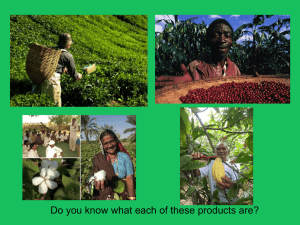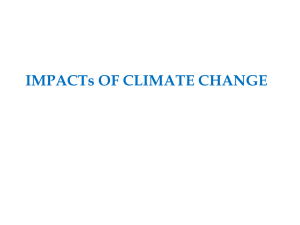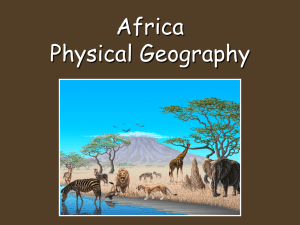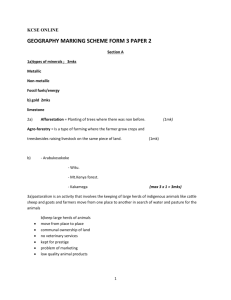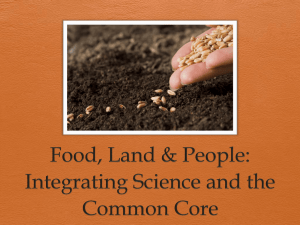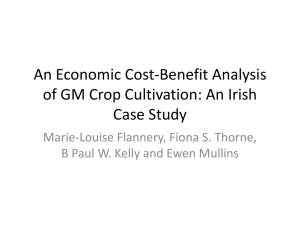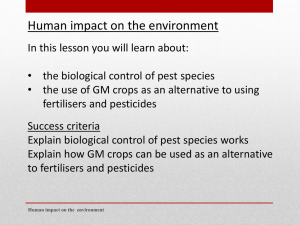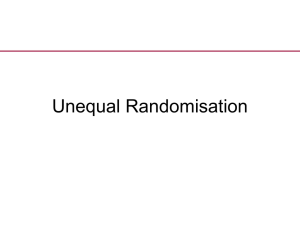Unequal Access to Resources & Sustainable Development
advertisement
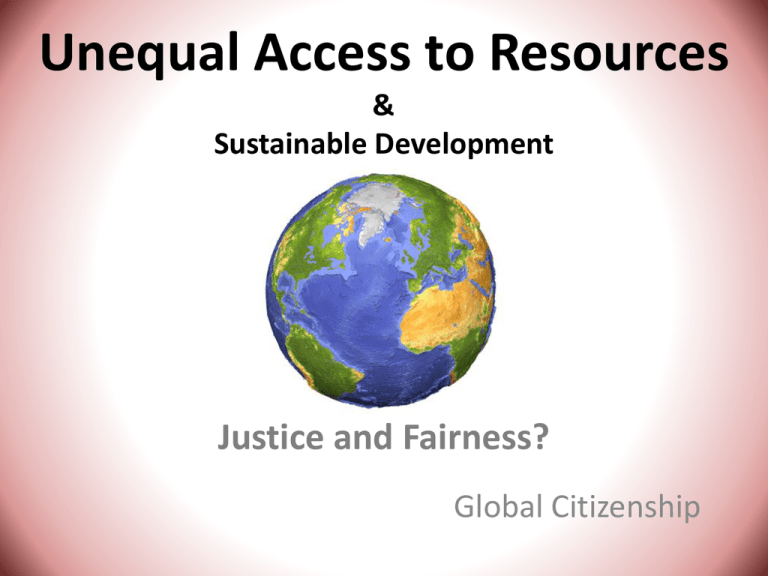
Unequal Access to Resources & Sustainable Development Justice and Fairness? Global Citizenship Learning Objectives After today’s session you should understand that: 1. Resources are important for survival, development, wellbeing and happiness. 2. Resources come in many forms (oil; water; food; workers; diamonds; crops; metals; minerals; energy, i.e. solar, wind, gas, coal). 3. Impacts of unequal access to resources can include poverty; unequal power; feelings of injustice; conflict; war; the exploitation of people and even slavery. 4. Access to resources is linked with power 1. Economically-developed countries hold power over less economically-developed countries, especially those that are dependent on cash from the export of agricultural crops. 2. Some resources are finite. What is a Resource? • When people use something, it becomes a resource • When a business/corporation uses something, it becomes a resource, i.e. Human Resources. Finite Resources • Most resources are finite, meaning they will not last forever. • However, sustainable resources are those that can be renewed over and over again, perhaps for millions of years, i.e. bio-energy, wind energy, solar energy, hydrogen and water energy (e.g. tidal energy and hydroelectric energy) are all renewable resources. • Fossil-fuel resources such as coal, oil shale, crude oil, tar sands and natural gas are non-renewable resources, and the burning of these for fuel also emits greenhouse gases. Development and Resources • For social, economic and community development to take place, resources are needed: – Human Resources, i.e. workers – Workers need their own resources such as food, water, shelter, good health, education and hospitals. – Natural Resources, i.e. oil, gas, coal, minerals, metals, wind, water, energy from the sun (solar energy), forests, etc. – Wind energy, solar energy and water energy (e.g. tidal and wave energy) are all examples of sustainable resources, as they won’t run out for millions of years. Access to resources is highly unequal • Worrying statistics on people’s access to resources: • Video: The Millennium Development Goals for 2015 (3.5 minutes) • An obvious resource that we can think of is money. • To access many resources we need money, but the distribution of money is highly uneven: – WebLink: People's Income, from $1 a day to over $200 a day (4 minute activity, see notes below) Unequal Access to Resources • In many parts of Africa, people have no access to decent medical facilities, education, decent shelter, clean water supplies or sanitation. • This affects individuals’ and communities’ wellbeing and sometimes even their survival • Many of these communities and individuals are very tough, astute, imaginative, unselfish and practical when using and sharing the few resources they have: Video: Practical Action in Kibera Practical Action and Energy Poverty • Practical Action “Energy for All” Campaign Unequal access to a scarce resource: Water Activity: (20 minutes) Please go to: http://www.globaleye.org.uk/secondary_sprin g01/focuson/index.html – Work through the pages of this learning tool about water and do all the activities. Look at the different websites that the pages direct you to. Diamonds: A resource for our vanity? Activity: (25 minutes) Please go to: http://www.globaleye.org.uk/secondary_sprin g06/focuson/index.html – Work through the pages of this learning tool about diamonds and do all the activities. Look at the different websites that the pages direct you to. Case Study: Kenya Activity: (25 minutes) Please go to: http://www.globaleye.org.uk/secondary_autu mn05/eyeon/index.html – Work through the pages of this learning tool about Kenya and do all the activities. Look at the different websites that the pages direct you to. Discussion (5 minutes) • How can we make sure that Article 24 of the 1989 UN Convention on the Rights to the Child is met? Discuss in groups of 4 then feed back your thoughts to the class Discussion (5 minutes) • Have diamonds been a good thing for the people of countries where they have been discovered? Discuss in groups of 4 then feed back your thoughts to the class • The Resource Curse – Video: Global Witness Orginisation (5 minutes) Discussion (5 minutes) • How equal is the access to power and resources in Kenya? Discuss in groups of 4 then feed back your thoughts to the class Cash Crops • Commodities (objects that can be bought and sold) – such as flowers in Kenya, peanuts in the Gambia or cocoa in Ghana – are all agricultural crops that can be exported for income – So these are often called cash crops. • Countries who depend on cash for their crops are often in a weak position economically. • Countries that buy these crops might then manufacture them into expensive goods (peanuts into peanut butter, cocoa into chocolate, or cotton into designer clothes). • They may even sell these more valuable goods back to the country where the original crops were grown. Summary of today’s learning 1. Resources are important for survival, development, wellbeing and happiness. 2. Resources come in many forms (oil; water; food; workers; diamonds; crops; metals; minerals; energy, i.e. solar, wind, gas, coal). 3. Impacts of unequal access to resources can include poverty; unequal power; feelings of injustice; conflict; war; the exploitation of people and even slavery. 4. Access to resources is linked with power 1. Economically-developed countries hold power over less economicallydeveloped countries, especially those that are dependent on cash from the export of agricultural crops. 2. Some resources are finite.

